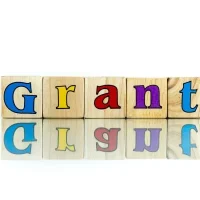Deadline: 10-Dec-21
The Department of Commerce is pleased to announce Coral Reef Conservation Program (CRCP) Domestic Capacity-Building Partnerships that focus on strategic goals, objectives, regions, and specific coral reef conservation activities where the CRCP can have the greatest impact while building on NOAA strengths, partnerships, resources, and expertise.
- Coral reefs and associated seagrass and mangrove communities are among the most complex and diverse ecosystems on earth.
- They support important fishing and tourism industries, protect coasts from wave and storm damage, contain an array of potential pharmaceuticals, and provide local communities with a source of food, materials and traditional activities.
- As shallow-water, near shore communities, coral reef ecosystems are ecologically linked to adjacent watersheds and are highly vulnerable to human activity. Stresses in the coral reef environment include poor water quality from runoff and inadequate sewage treatment, sedimentation, destructive fishing practices, recreational overuse and misuse, and impacts from climate change, including changes in ocean chemistry.
- To address these and other threats, Congress passed the Coral Reef Conservation Act (CRCA or the Act), codified at 16 U.S.C. 6401-6409, which established the National Oceanic and Atmospheric Administration (NOAA) Coral Reef Conservation Program (CRCP) and provided guidance for allocation of Federal funding toward efforts to conserve coral reef ecosystems in the U.S. and internationally.
- As described in the Act, one of the primary functions of the CRCP is to provide financial assistance to external partners for coral reef conservation projects consistent with the Act and CRCP priorities. CRCP implements several financial assistance programs under the Act’s authority, including the partnership projects announced in this notice.
- Under 16 U.S.C. 6401-6409 and pending federal appropriations in FY 2022 and 2023, CRCP funding of approximately $1,000,000 per year is expected to be available for initiating partnership(s) with up to ten organizations in FY 2022.
- Based on the number of projects proposed, application are expected to be within the range of $50,000 to $750,000.
- CRCP will consider funding a single proposal that includes support for all seven coral reef states and territories and/or several proposals in the Pacific Islands (benefitting Hawaii, American Samoa, Guam, and/or the Commonwealth of the Northern Mariana Islands), the Atlantic/Caribbean region (benefitting Florida, Puerto Rico, and/or the U.S. Virgin Islands), and a national capacity-building project, or any combination thereof. It is expected that a minimum of one project, but not more than two projects, will be selected to benefit each jurisdiction in any combination of proposals.
- Applications may propose work plans of up to 24 months, and may at most request between $90,000 per state or territory, depending on how many of the seven coral states and territories will benefit from the proposed project(s) and up to $150,000 for a national capacity-building project.
- Eligible applicants include non-profit and non-governmental organizations, institutions of higher education, and for-profit organizations that have demonstrated expertise andexperience in supporting coral reef management in U.S. states and territories.
- NOAA employees are not permitted to assist in the preparation of applications or write letters of support for any application. NOAA CRCP staff is available to provide general information on programmatic goals and objectives, ongoing coral reef conservation programs/activities, and regional funding priorities. For proposals that involve collaboration with current NOAA projects or staff, NOAA employees may provide a limited statement verifying the nature and extent of the collaboration and confirming prior coordination activities. Letters of support from NOAA employees are not allowable and will not be included among the application materials considered by merit reviewers.
- Federal agencies and employees cannot receive funds under this announcement but may serve as collaborative project partners. If Federal agencies are collaborators, applicants are expected to provide detail on the planned level of Federal engagement in the application.
- Examples might include, but are not limited to partnership services; serving in a review capacity; or participating in priority task teams, working groups, or leadership teams.
For more information, visit https://www.grants.gov/web/grants/view-opportunity.html?oppId=336225








































